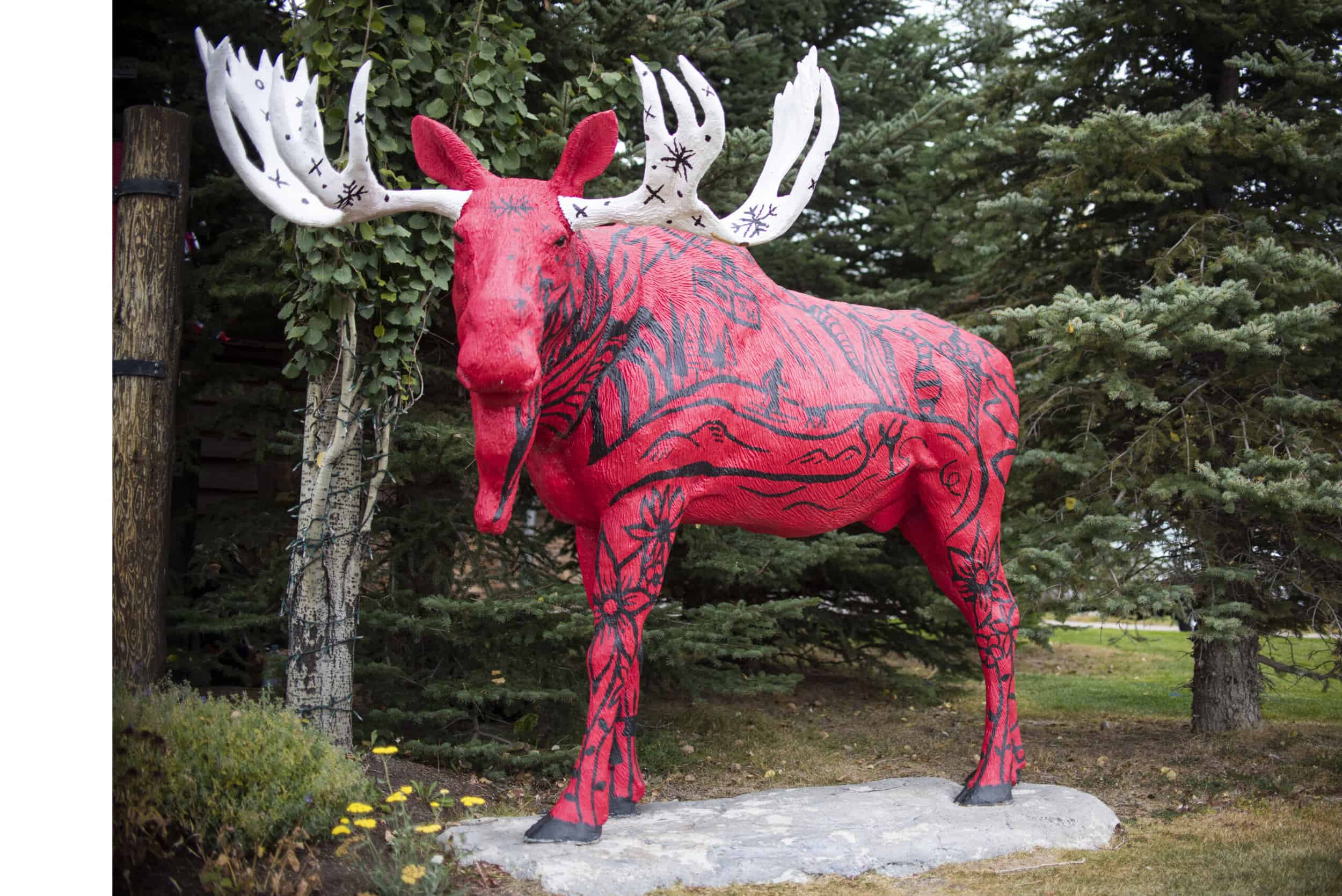Read The
Current Issue
Art for All
Jackson Hole’s Public Art
// By Sue Muncaster
The landscape of Jackson Hole has a long history of inspiring artists. In 2019 the valley was named the number-one small arts community in the nation. While the valley has had art galleries since the 1960s, and the National Museum of Wildlife Art since 1987, an equally important part of the art scene is public art. Dozens of pieces—large- and small-scale, abstract and realistic, temporary and permanent—live throughout the valley. Land-development regulations; cultural creatives; and Jackson Hole Public Art, a collaborative nonprofit, drive this form of collective community expression that celebrates our history and illuminates current issues. Here’s where to find some of our favorite pieces.

The Jackson Hole Airport has about a dozen pieces of art throughout its public areas and terminal. Hanging at the south end of baggage claim, the aerial silhouette Arrival Over the Snake River depicts the view seen by incoming planes. Rendered in brushed stainless steel, the installation was designed by Bland Hoke, Terry Chambers, and Shane Lindsay. The baggage claim area is also home to a whimsical watercolor by Nelson Boren—of a family’s jeans and cowboy boots from the knees down—and a display of intricate antique beaded moccasins from the Sioux, Cheyenne, and Blackfoot tribes. Near the beaded pieces is an oil painting by Chinese artist Z.S. Liang of Lakota women trading with pioneers. A tanned buffalo hide by Gros Ventre tribe member Al Chandler is painted with natural pigments and deer hooves. Throughout the airport, historic cattle brands are burned into public benches. The largest piece in the airport’s collection is hard to miss: A Battle of Wills (shown above), a 15.5-foot-tall bronze statue of a cowboy on a bucking bronco by Bart Walter (whose work is also in the permanent collection at the National Museum of Wildlife Art), has pride of place in the middle of the airport’s entrance/exit roundabout.
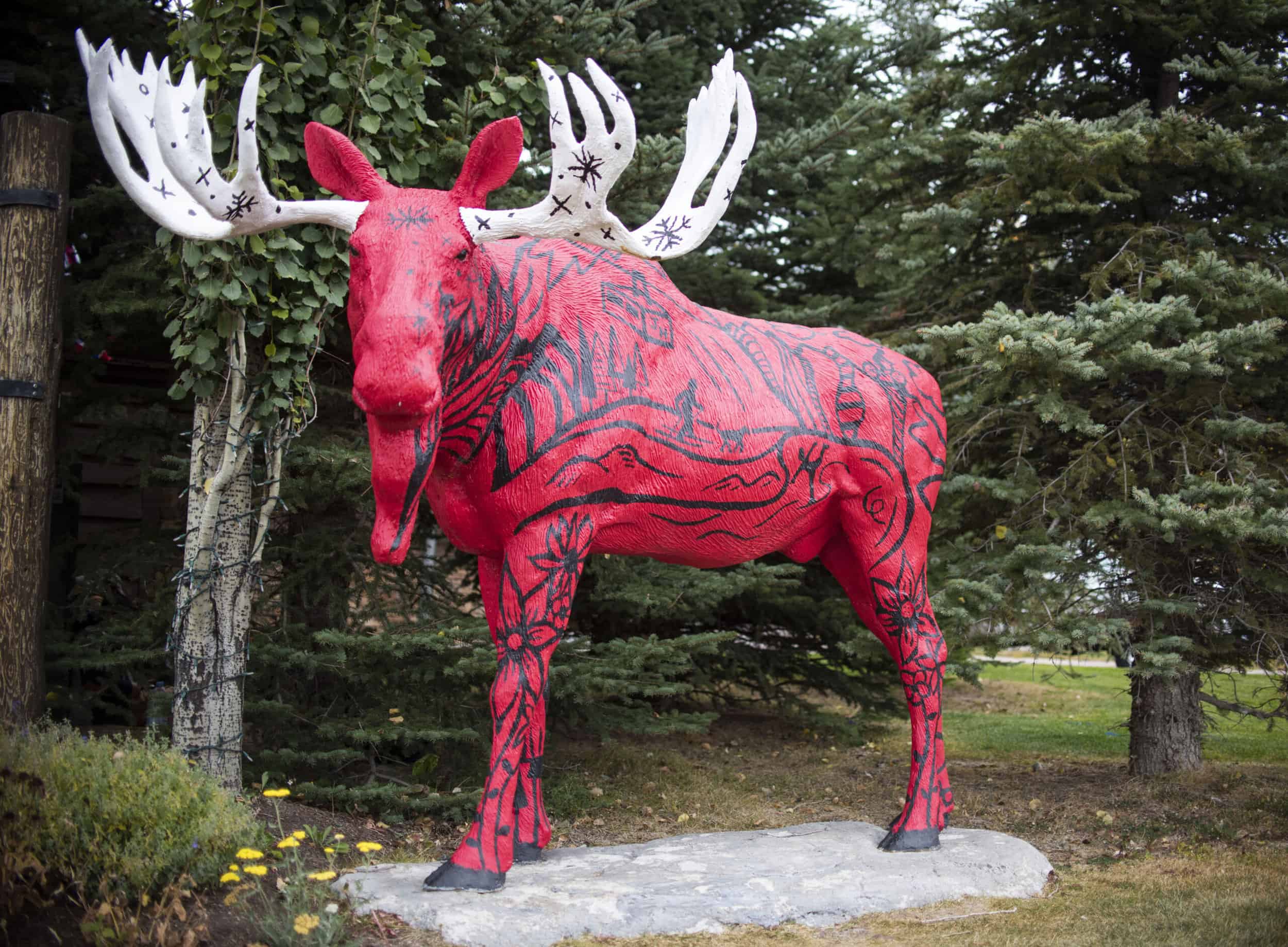
In 2019, the Teton Village Association commissioned local artist Haley Badenhop to bring new life to an aging metal sculpture in front of the Snake River Lodge and Spa. The Moose (shown below), painted by Badenhop a shade of red to match the Jackson Hole Mountain Resort tram, plays host to a vibrant winter scene via a series of line drawings that depict Jackson Hole mountain culture. Another bright-red sculpture, Major Bison by John Simms (who did the bison and fish in front of the U.S. Forest Service building on N. Cache St.) inhabits the meadow along McCollister Drive, the southernmost entrance to Teton Village.
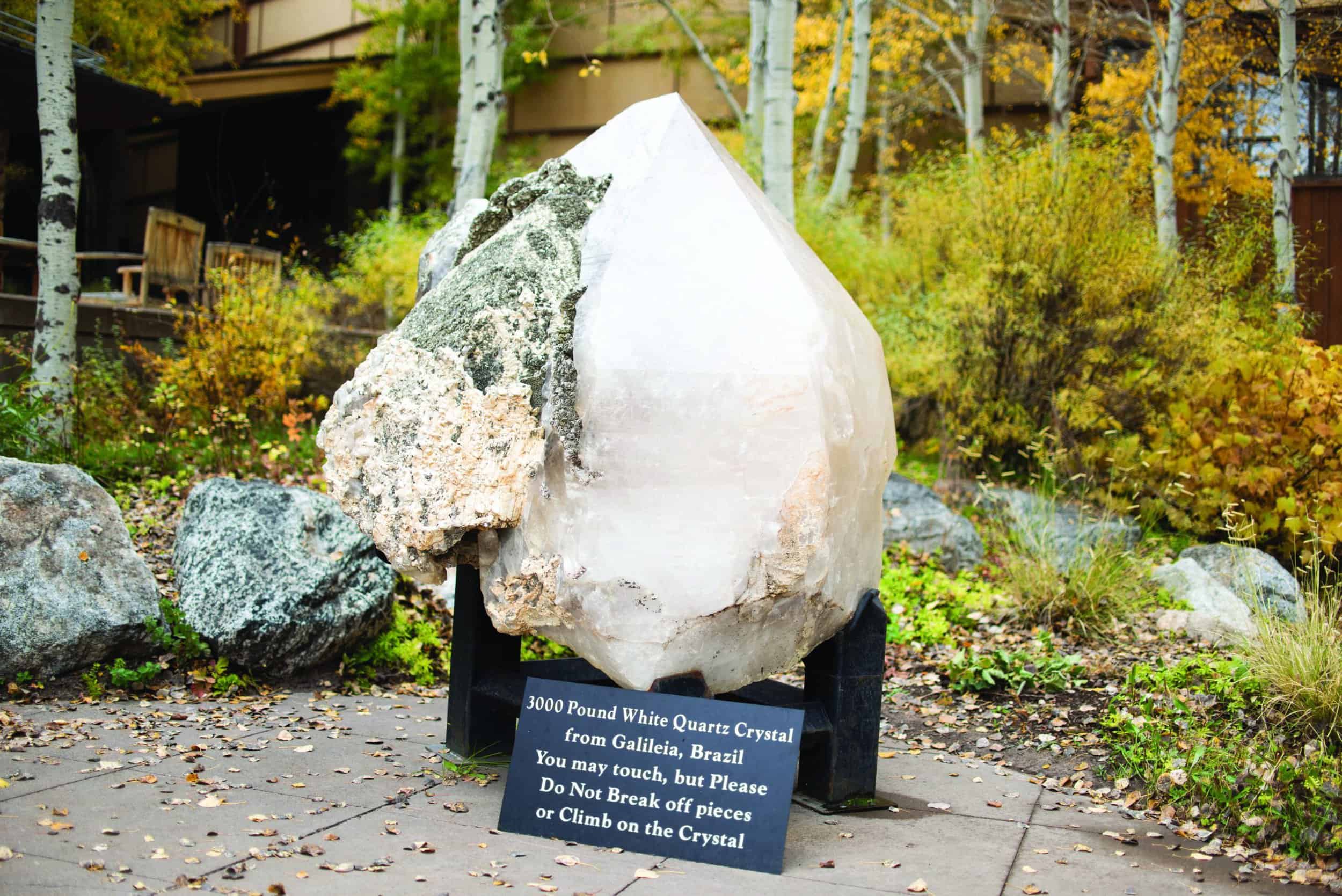
On the slopes of the Jackson Hole Mountain Resort, resort co-owner Connie Kemmerer had two 3,000-pound “wisdom quartz” crystals—considered one of the most powerful healing crystals—installed. Connie’s Crystals were quarried in Galiléia, Brazil, a major energy vortex like the Tetons. The crystals are meant to energetically protect the resort and the community and positively impact every guest. One sits between the Tram and the Teton Club in the base area; the other is near Solitude Station.

The valley’s original pieces of community-created public art might be the four elk-antler arches that anchor the corners of the Town Square. The arches were first erected in 1953 by the Rotary Club. Artisans wove together individual antlers gathered from the nearby National Elk Refuge. After 60 years, the arches had decayed to a dangerous level, and the Rotary Club, with help of the Town of Jackson Public Works department, rebuilt them between 2006 and 2015. Each arch is estimated to contain 10,000–12,000 pounds of antlers (which elk shed naturally every year, so no elk were harmed to make the arches).

Jackson Hole Public Art’s annual art event, WildWalls, is responsible for most of the colorful murals found in downtown Jackson. For the fourth event, in 2021, 11 artists collaborated with scientists to create two permanent and nine temporary interactive, educational murals that highlight the rich diversity of flora and fauna in the Greater Yellowstone Ecosystem. Most of the WildWalls murals have augmented-reality features that transform the static image into a live animation on current science from the Greater Yellowstone Ecosystem. Experience the augmented-reality clips via the JH Public Art channel on the Hoverlay App (available on your smartphone). Current installations appear on the app as you near them. Great places to start are the south wall of Trio Bistro (45 S. Glenwood St.) and the east wall of the Snake River Brew Pub (265 S. Millward St.). Katy Ann Fox painted The Time in Place, of larger-than-life local wildflowers, at the former; Dan Turo’s Hooked, of a giant Snake River Cutthroat Trout (shown above), adorns the latter.
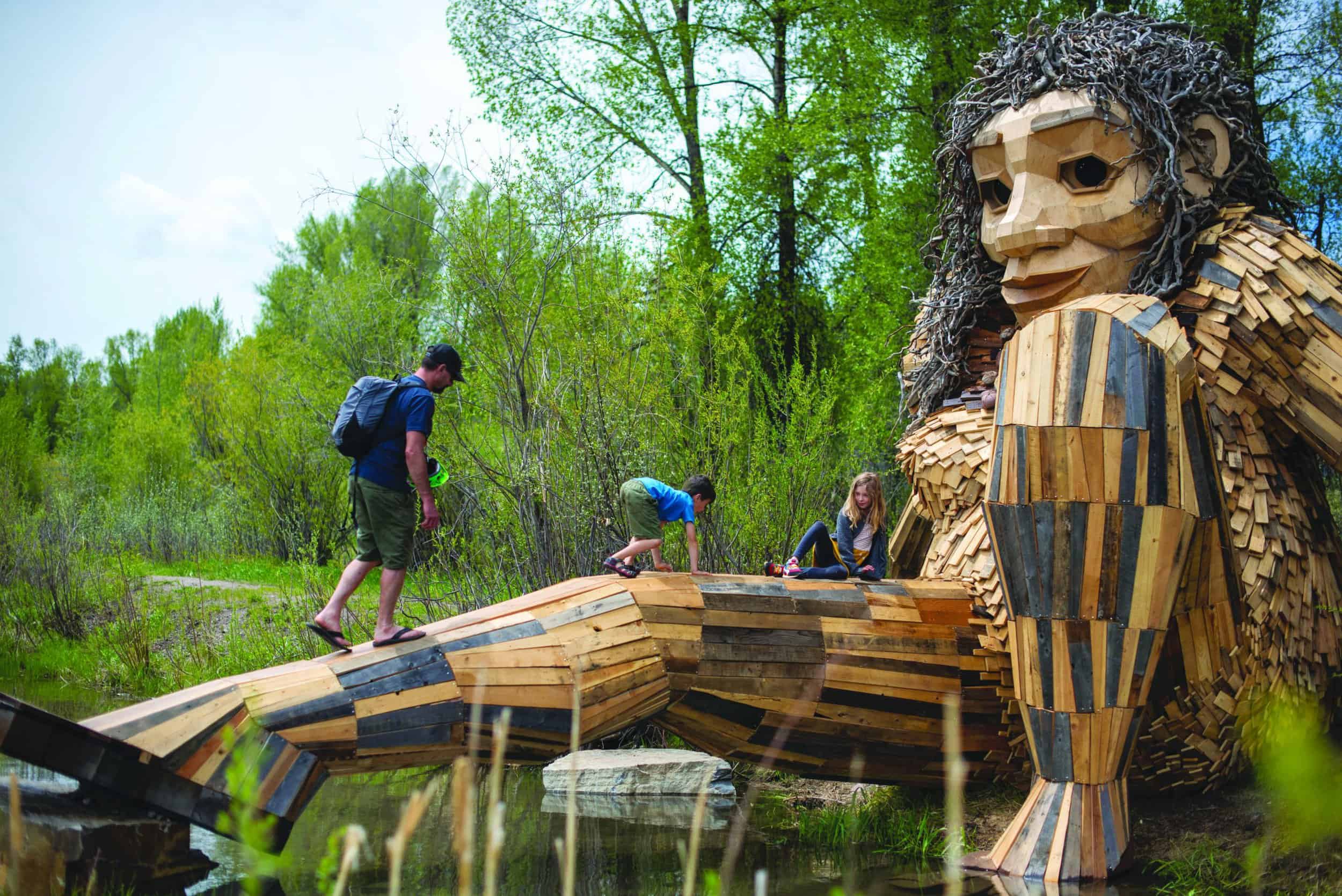
Mama Mimi materialized in R Park last summer. Copenhagen-
based artist Thomas Dambo built the gigantic troll almost entirely from recycled wood and materials salvaged locally. (Dambo constructed her face in his Denmark studio.) Dambo installs trolls worldwide, and Mama Mimi was his 80th. JH Public Art executive director Carrie Geraci says, “Mama Mimi is about the universal joy of inspiring discovery, inviting new users to the park, and connecting to the park’s ethos of conservation. Thomas Dambo is a world-renowned recycling artist, and the more we can recycle and reuse, the more land we can conserve.” Not just a pretty face, Mimi is interactive—jump up onto her lap and then balance as you walk down her extended leg to a small island.

The idea behind ArtSpot,on the north side of Broadway Avenue on the hillside across from the Virginian, is “to inspire, without distracting, the more than 30,000 drivers who pass this spot every day,” according to JH Public Art. Every 6 to 12 months, JH Public Art chooses a regional artist to install a project atop a repurposed chairlift tower stabilized by a snowplow blade and parts from a bank vault. The 2022 artist was not chosen as of press time. Memorable past installations include Charlie Brown’s Sweater by Suzanne Morlock and David Watson’s 2021 installation, Stampede, which is shown above and depicted a colorful herd of bison.
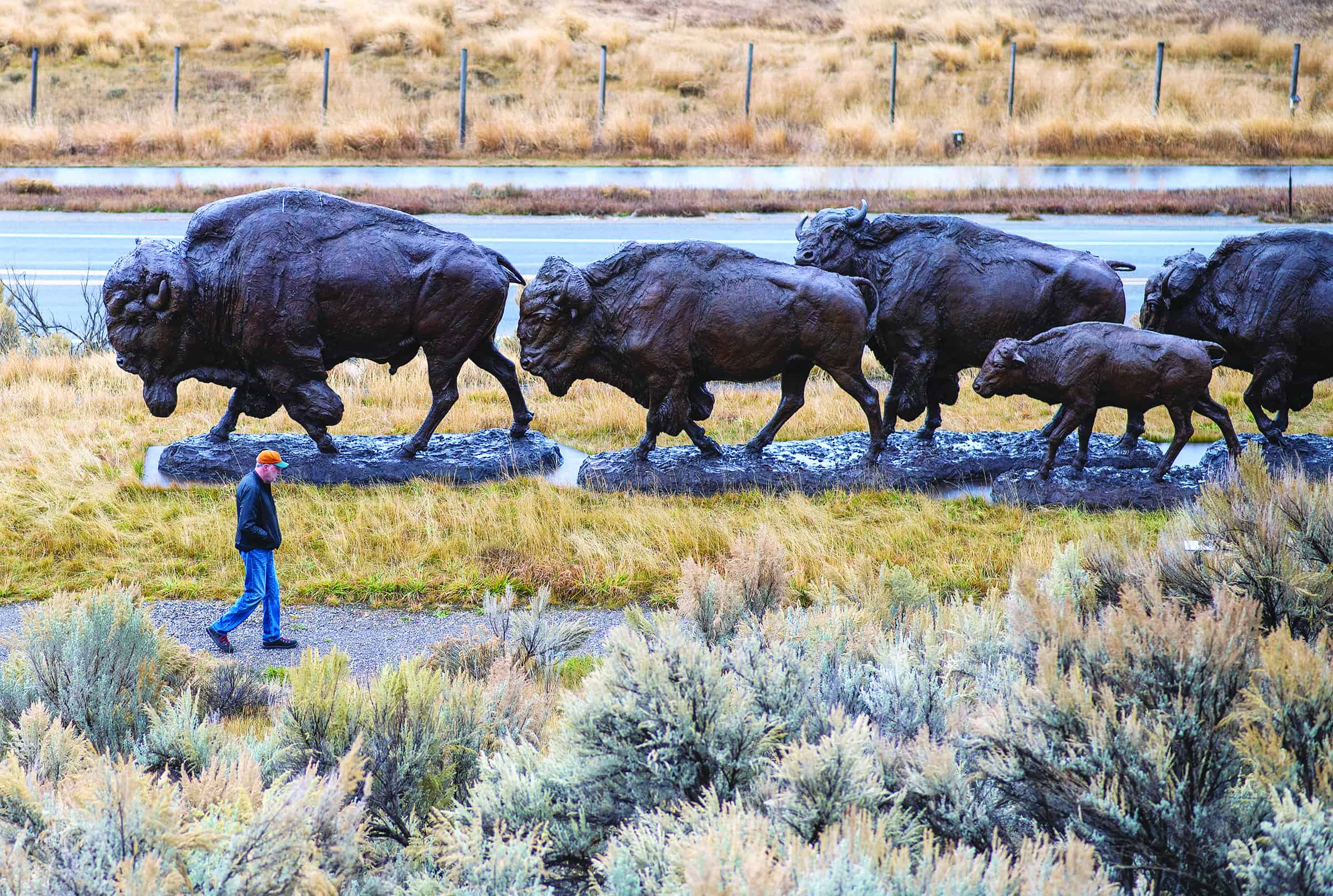
The National Museum of Wildlife Art has a three-quarter-mile Sculpture Trail with about 30 pieces of artwork along its length. The free outdoor art venue was designed by award-winning landscape architect Walter Hood, whose philosophy is to “design pieces that relate directly to the space around them, while at the same time transforming them.” Richard Loffler’s 64-foot-long bronze, Buffalo Trail (shown here), which features five adult bison and two calves, sits on the south end of the trail. Simon Gudgeon’s Isis, a contemporary take on an ibis, anchors the north end. Download the National Museum of Wildlife Art app to learn more about the trail.
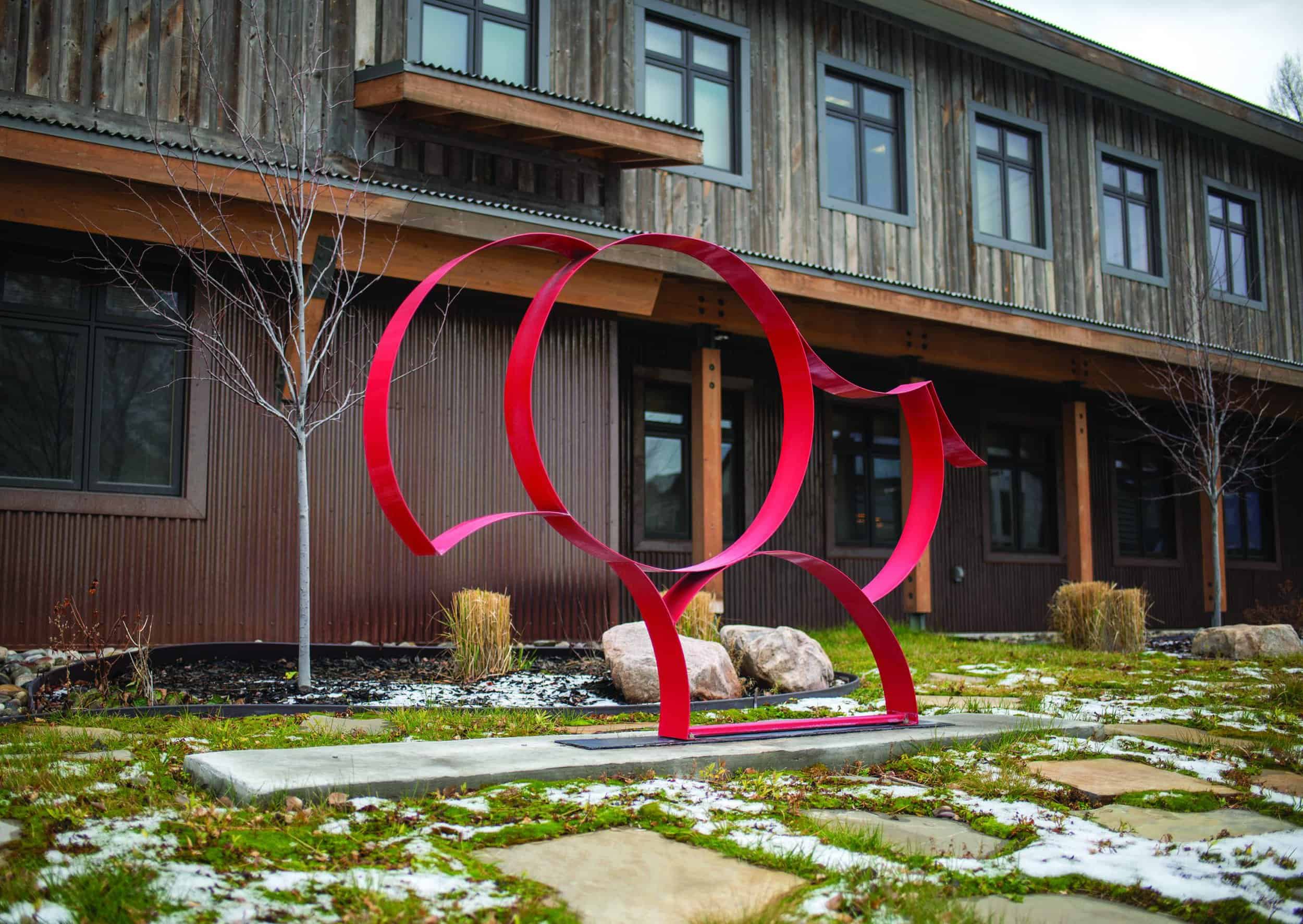
When entering the Town of Jackson from the north on Cache Street, keep an eye out for geometric metal sculptures—a bright red bison (shown here) and a brilliant blue school of fish. Set in front of the United States Forest Service building (340 N. Cache St.), the pieces were made by longtime local artist (and ex-ski patroller and river guide) John Simms. JH

It’s impossible to keep track of what and how many pieces of public art there are at The Center campus. Outside installations range from community-spawned “knitting-bombed” bike racks to River in Reverse, a wall sculpture on the southwest corner of the Arts and Education Wing that is the mirror opposite of the airport’s Arrival Over the Snake River by Bland Hoke, Terry Chambers, and Shane Lindsay. Inside The Center are several public gallery spaces that host diverse rotating exhibits—from pieces by local students to photography and painting by national artists. This winter, in a courtyard just inside the west entrance, you’ll find Ben Roth’s temporary exhibit Earthrise. A local artist, Roth created the piece from cross-cut sections of dead tree trunks harvested from a local ranch. Read more about The Center, which celebrates its 15th anniversary in 2022, on page 76.
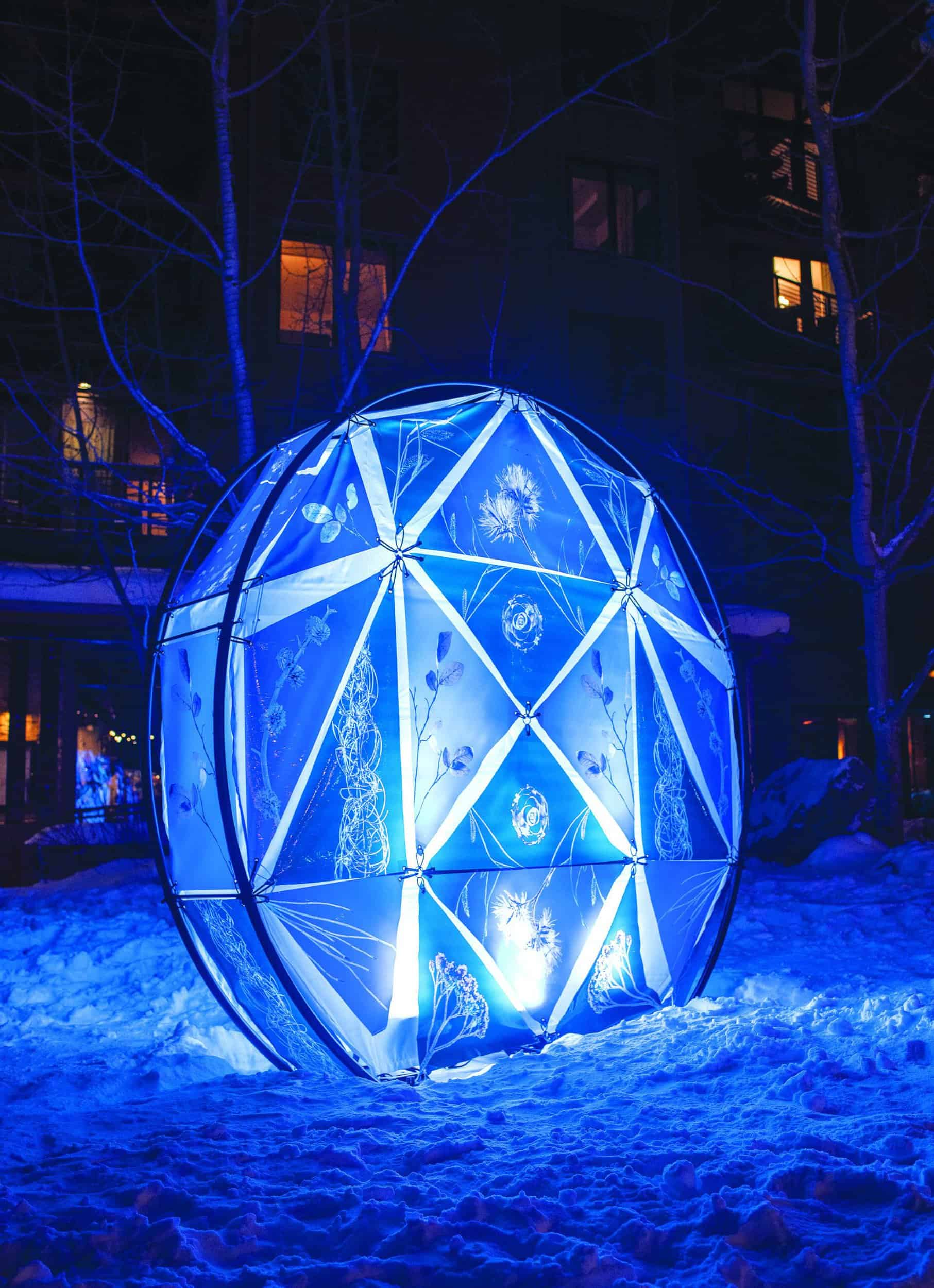
Interactive ice and snow sculptures in the Village Commons are back this winter after a Covid hiatus. It tusually takes five days for JHMR’s parks and pipes crew to create the sculptures, which might feature ice castles, forests, igloos, and slides—a literal winter wonderland. Kids are welcome to climb in, on, and through everything. Also in the Village Commons is a collaboration with JH Public Art, GlowNights. This annual installation pops up just before Christmas and gives local artists and businesses the opportunity to show off their creativity using light as a medium while celebrating the natural phenomena found in the Greater Yellowstone Ecosystem. Past projects included Flora Moon, a glowing geometric ball formed by translucent panels of native wildflowers by Los Angeles-based Maggie West (shown above).

